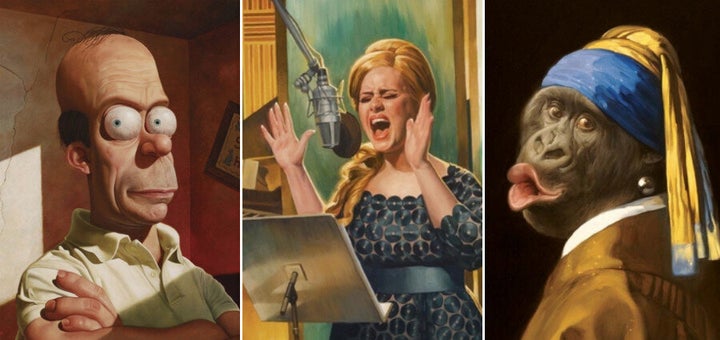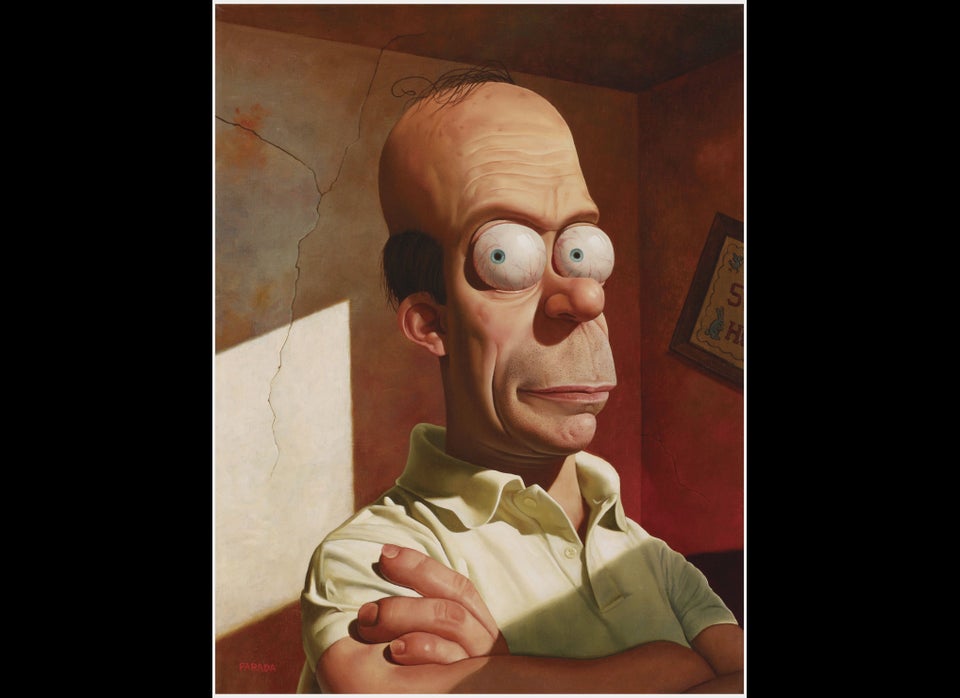
Roberto Parada is a contradiction in terms. A freelance magazine illustrator with clients of various political stripes and subscription numbers (from GQ to The National Review to Associations Now, "the premiere magazine for association executives"), and graduate of Pratt Institute, Parada is that rare thing: a well-known unknown artist. It's likely you've thumbed through Paradas in the doctor's office, or pulled them out of your mailbox, though you may not have known that's what they were. One of the distinguishing characteristics is that they're tricks: Parada and his kind are hired if a point is to be made. Want to illustrate the liberation of modern Christians from the church? Have Parada paint Jesus stepping off the cross.
Parada's career, which began in the nineties, has seen the advent of the Internet and the end of the time when you dropped an actual painting off at a magazine's office. These days, he photographs his work and emails it in, all of it painted in non-toxic oil (yellows and reds aren't as rich without the heavy metal cadmium base, but after surviving a serious illness that seems linked to paint thinner, Parada changed his materials).
The one work he reckons will define him among circles in the know -- his Campbell Soup of sorts -- is a portrait he made to accompany a 1999 Esquire article, "The Gospel According To Homer Simpson," arguing that cartoons on TV were confronting real family dynamics better than live action shows.
Esquire requested a "realistic version of Homer," a concept meant to illustrate the televisual crossover. First Parada tried to paint a human face that looked like Homer's. But he quickly realized he was missing the sense of a cartoon come to life. "It was basically just a face," he told The Huffington Post. He turned to the late American painter Andrew Wyeth for inspiration, a naturalist whose feel for light and texture is evident in his famous painting "Christina's World," of an away-facing girl in a field that appears, from the look of the girl's hair, to be beset by wind. As Parada explained it, Wyeth's "very thin strokes" were the ticket to morphing cartoon Homer into real Homer.
"I tried to make it three dimensional, with razor stubble and a little more shadowing, and a kind of intimidating pose. The influence of Wyeth -- those thin tempra layers -- create textures like beard stubble and give that angle of light and shadow. "
Like all good works of art, Parada's Homer has a kooky true story attached to it. Homer gets more emails than any other of his works, from people inquiring about buying it to fans requesting a spinoff series, but in 2005, Parada got one that threw him: written by the notoriously shy and gifted director Charlie Kauffman. Kauffman, who Parada calls "a very nice man," wrote saying how much he loved real Homer. Then, presumably, he emailed others. Many others. "I don't know if it was just him. Maybe he emailed it to some friends," Parada told us. "The next thing I know there were so many hits on the painting that it shut my website down."
We've compiled a look at Parada's prolific, hidden from sight career, from the Homer that slayed Kauffman to the famous shot of John F. Kennedy and John Jr. in the Oval Office, remixed to star George W. Bush and Dick Cheney. The images reflect the reason Parada, and the many illustrators like him, get hired for the job instead of a photographer -- in each, a concept is conveyed, whether it's Homer's realness, or Kobe Bryant and Paul Pierce as modern-day Larry Bird/Magic Johnson rivals (concepts that would cost much more for the magazine if a photographer were to take a crack). Take a look below, and let us know which of the paintings you think convey their meaning best.

